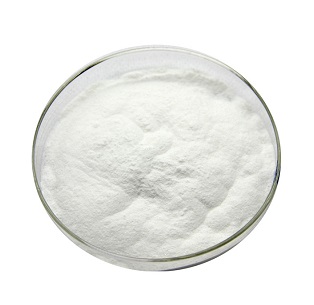Background and overview[1][2]
Alalic acid-S-methyl is also called activated ester (1,2,3-benzothiadiazole-7-thiocarboxylic acid methyl ester), which is a plant disease resistance activator. It itself has no bactericidal activity or therapeutic effect, but after it is absorbed by the plant, it activates the plant’s resistance mechanism, allowing the plant to develop broad-spectrum self-protection against a variety of fungi, bacteria, nematodes, and viruses, and produce lasting resistance. sex. Alaric acid-S-methyl can prevent powdery mildew, rust, downy mildew, etc. on vegetables, fruits, cereals, and tobacco. The dosage is small, but the effect is very good, and the resistance can last for more than 14 days.

Preparation method[1]
Synthesis of 1,2-chloro-3,5-dinitrobenzoic acid methyl ester
Add 15.6g (0.1mol) 2-chlorobenzoic acid, 60ml concentrated sulfuric acid, and 50.5g (0.5mol) potassium nitrate into the reactor, stir and react at 50-60°C for 3 hours to generate 5-nitro compound. Then gradually increase the temperature to 130-140°C and react for 2 hours. The total reaction time is about 8 hours. Once cool, pour into crushed ice. Filter, wash, and dry to obtain the product. The yield is 90%. Melting point 199.5-201℃. Add 45.5g (0.18mol) of the prepared 2-chloro-3,5-dinitrobenzoic acid, 24ml of concentrated sulfuric acid, and 120ml of methanol into a four-necked flask and stir at 70°C to 80°C for 24 hours. Cool and filter. Wash with water and dry to obtain methyl 2-chloro-3,5-dinitrobenzoate.
Synthesis of 2, 2-mercapto-3,5-diaminobenzoic acid methyl ester
Add 28.3g (0.118mol) sodium sulfide (Na2S.9H2O) and 3.8g (0.118mol) sulfur powder into the beaker, stir at 50°C for 0.5 hours to prepare a sodium disulfide solution.
Pour the sodium disulfide solution into a reaction vessel containing 24.6g (0.1mol) 2-chloro-3,5-dinitrobenzoic acid methyl ester, add 100ml of 95% ethanol, stir together, and heat to reflux for 4 seconds hours, a disulfide solution was obtained. The ethanol was distilled off under reduced pressure. It can also be purified by recrystallization to obtain pure bis(2,4-dinitro,6-carboxylic acid methyl esteryl-phenyl) disulfide.
To 24.8g (0.055mol) bis(2,4-dinitro,6-carboxylic acid methyl ester-phenyl) disulfide solution, directly add 57.4g (0.33mol) sodium dithionite, 47.4g ( 0.33mol) potassium carbonate and 150ml water, stir and heat to reflux for 4 hours. After cooling, filter, and the filtrate is acidified under cooling. First neutralize with dilute hydrochloric acid to pH≈8, then adjust to pH=3~4 with acetic acid, extract with ethyl acetate 2~3 times, and dry the organic phase with anhydrous sodium sulfate. . The solvent was evaporated under reduced pressure to obtain the target product with a yield of 94%. It can also be recrystallized and purified to obtain pure 2-mercapto-3,5-diaminobenzoic acid.
Synthesis of 3.1,2,3-benzothiadiazole-7-carboxylic acid
18.4g (0.1mol) 2-mercapto-3,5-diaminobenzoic acid was dissolved in 100ml concentrated hydrochloric acid and 50ml water, stirred at room temperature for 1 hour, cooled to 0°C, and 27.6g (0.4mol) nitrous acid was added dropwise The 40% aqueous solution of sodium should be added in about 2 hours, and the volatilization of nitrogen oxides should be minimized. After the addition is complete, stirring is continued at 0°C for 2 hours. Cool the temperature to -5°C, add 39.6g (0.3mol) 50% hypophosphorous acid solution dropwise within 30 minutes, and continue stirring at -5°C for 2 hours. Then it was slowly raised to room temperature and stirred for 20 hours to completely release the nitrogen. Add 150 ml of water, filter, wash with water and dry to obtain a crude product with a yield of 94%. The crude product was recrystallized from ethyl acetate-petroleum ether and had a melting point of 260-262°C.
4. Synthesis of Alaic acid-S-methyl
Dissolve 18.0g (0.1mol) 1,2,3-benzothiadiazole-7-carboxylic acid in 60ml toluene, add 14.2g (0.12mol) thionyl chloride, and a few drops of dimethyl Use formamide as a catalyst, stir and heat to reflux for 8 hours. Evaporate excess thionyl chloride and cool the remainder for later use.
Cool 38.6g (0.11mol) of 20% sodium methylmercaptide aqueous solution to -15°C, and slowly drop in the cooled solution of 1,2,3-benzothiadiazole-7-carboxylic acid chloride while stirring. , to keep the temperature below -10℃. After the addition is complete, continue stirring at this temperature for 2 hours. The toluene solution was separated, washed with water, and dried over anhydrous magnesium sulfate. Toluene was distilled off under reduced pressure to obtain a product with a yield of 92% and a melting point of 128-130°C. That is, alaic acid-S-methyl is obtained.
Features[2]
Composed of a variety of biotic and abiotic factors, it can activate the plant’s own defense response “systemic activation resistance”, thereby enabling the plant to protect itself against a variety of fungi and bacteria. Plant disease resistance activator with almost no bactericidal activity. Suitable crops include rice, wheat, vegetables, bananas, tobacco, etc. It is safe and non-toxic to crops at the recommended dosage. It can prevent powdery mildew, rust, downy mildew, etc.
How to use[2]
Alalic acid-S-methyl can be used as a protective agent on crops such as rice, wheat, vegetables, bananas, and tobacco. For example, on cereal crops, spraying 2g (active ingredient) per acre with 50kg of water can effectively prevent powdery mildew. The residual effect period can last for 10 weeks, and it can prevent leaf blight and rust. Spray 50kg of water with 0.8g of active ingredient per acre and spray once every 14 days, which can effectively prevent tobacco downy mildew. Mixing with other conventional agents such as metalaxyl, mancozeb, dimethomorph, etc. can not only improve the prevention and treatment effect of activated ester, but also expand its disease prevention scope.
Main reference materials
[1] [China invention, China invention authorization] CN200910068354.9 Synthesis method suitable for industrial production of activated ester
[2] Practical Handbook of Pollution-Free Pesticides


